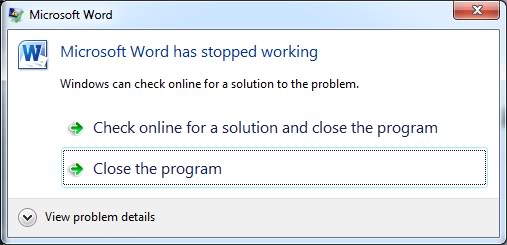Join Transform 2021 this July 12-16. Register for the AI event of the year.
Announcing Microsoft PowerToys. A set of utilities for power users to tune and streamline their Windows 10 experience for greater productivity. Microsoft Ignite. Join our digital experience on March 2–4, 2021 to learn, connect, and explore new tech that’s ready to implement.
- Word, Excel, and PowerPoint combined in one app:. The most widely used tools for working with documents, spreadsheets, and presentations, all from a single app. Create, edit, and work together.
- Access Windows 10 desktop and applications from anywhere, on any device. Regardless of your device type (Windows, Mac, iOS, Android or any other device with an HTML5 web client) bring-your-own-device (BYOD) and remote connect to your enterprise experience with Windows Virtual Desktop.
- Microsoft Learn. Whether you're just starting or an experienced professional, our hands-on approach helps you arrive at your goals faster, with more confidence and at your own pace. Learn on your own schedule.
- Just sign in and go. Access your favorite Microsoft products and services with just one login. From Office and Windows to Xbox and Skype, one username and password connects you to the files, photos, people, and content you care about most.
Microsoft’s recent shopping spree reached a new climax this week with the announcement of its $19.7 billion acquisition of Nuance, a company that provides speech recognition and conversational AI services. Nuance is best known for its deep learning voice transcription service, which is very popular in the health care sector.
The two companies had already been working together closely before the acquisition. Nuance had built several of its products on top of Microsoft’s Azure cloud. And Microsoft had been using Nuance’s Dragon service in its Cloud for Healthcare solution, which launched last year in the midst of the pandemic.
The acquisition is Microsoft’s biggest since the $26 billion purchase of LinkedIn. And it tells a lot about Microsoft’s AI strategy.
AI in health care
Most of the focus in the announcement was on AI in health care, which makes sense because Nuance is a leading provider of AI services in the sector.
“Nuance provides the AI layer at the health care point of delivery and is a pioneer in the real-world application of enterprise AI,” Microsoft CEO Satya Nadella said. “AI is technology’s most important priority, and health care is its most urgent application.”
AI is technology’s most important priority, and healthcare is its most urgent application. Together with @NuanceInc, we will put advanced AI solutions into the hands of professionals to drive better decision-making and create more meaningful connections. https://t.co/ipdP6qZTx9
— Satya Nadella (@satyanadella) April 12, 2021
One thing I like about Nuance is its laser focus, which is in line with the current limits and capabilities of deep learning algorithms. Deep learning might not be very good at general problem-solving or causal inference, but it can be extremely efficient at narrow tasks. Nuance has chosen one application (voice transcription) and has narrowed down its focus to one domain (clinical settings). This has enabled the company to train its machine learning models on tons of data in that specific field and make sure that its AI solutions have peak performance and reliability.

Nuance has a series of AI products tailored for clinical settings, including a virtual assistant for electronic health records, a multi-party conversation transcription service, and a deep learning language model that converts clinical conversations into structured notes for integration into health records.
Documentation is one of the main pain points for clinics and one of the lowest-hanging fruits for AI in health care. Nuance’s AI technology is helping save time and improve the patient experience. According to the acquisition announcement, Nuance’s AI solutions are currently used by more than 55% of physicians and 75% of radiologists in the U.S. and used in 77% of U.S. hospitals. The company has also seen a 37% year-over-year growth in the revenue of its cloud service, though that is probably due to the shifts caused by the COVID-19 pandemic.
“The acquisition will double Microsoft’s total addressable market (TAM) in the health care provider space, bringing the company’s TAM in health care to nearly $500 billion,” according to Microsoft’s announcement.

Microsoft’s position in health care
Nuance’s reach in the health care market suggests Microsoft will recoup its $19.7 billion investment in a relatively short term. But being able to address this market is not a simple feat.
Other big tech companies, such as Apple and Google, already have health care initiatives that are much older than Microsoft’s. But Microsoft is especially well-positioned to take advantage of this new acquisition because of its business model.
Google and Apple are consumer companies. Microsoft, on the other hand, gets most of its revenue from enterprise customers. Its Office suite and its collaboration tools were already being used in many hospitals even before it announced its health care solution. That’s why it was already in a good spot to penetrate the market.
And if you look over at the Cloud for Healthcare page, the company has done a great job of integrating its health solution into tools that many health care workers were already used to working with, such as Outlook, Teams, Office, and messaging apps. The real advantage is the infrastructure Microsoft has built, the integration of all these services with clinical applications, and terrific data engineering that makes it possible to deploy machine learning models and data analytics tools that span various data sources.
This is the perfect infrastructure on top of which Microsoft can build an AI factory, where it creates machine learning models that provide ways to improve existing products and build new ones. The acquisition will enable Microsoft to accelerate its growth by leveraging Nuance’s reach in the health care sector. Now every Nuance customer will also be a Microsoft customer.
Beyond health care
Before the acquisition, Microsoft was already using Nuance’s Dragon AI technology in its health care solution, transcribing virtual visits, taking notes, and integrating information into patients’ health records. Now, with the acquisition of Nuance, Microsoft will also have full access to its technology and will be able to take its new AI transcription power beyond health care.
“Beyond health care, Nuance provides AI expertise and customer engagement solutions across Interactive Voice Response (IVR), virtual assistants, and digital and biometric solutions to companies around the world across all industries,” Microsoft says in its blog.
It will be interesting to see how Nuance’s technology will be integrated into other Microsoft enterprise products.
One thing that is also worth watching is how Microsoft will be able to combine Nuance’s AI with other technologies it’s experimenting with. For instance, Microsoft already has an exclusive license to OpenAI’s GPT-3 language model. Nuance’s transcription technology and GPT-3 might become a powerful combination for the enterprise.
Microsoft Windows
Microsoft’s AI strategy
Microsoft Word
Microsoft might not be able to predict which company will be successful in five years’ time, especially in a field as volatile as AI. But it’s banking on the one constant that is always needed in the field: compute power. Microsoft uses its huge Azure platform to develop ties with companies, often providing them with subsidized access to its cloud-based machine learning tools. It also makes many of its investments in Azure credits, ensuring companies it invests in will be locked into its platform. This puts Microsoft in a position to both help those companies grow and learn from them. And the investment pays off when the company’s technology and business model mature.
Microsoft Word Free Download For Windows 10
Earlier this year, I wrote about Microsoft’s investment in the self-driving car startup Cruise, which also made Microsoft Azure the preferred cloud of Cruise and its owner General Motors. I noted at the time that Microsoft’s success is in maintaining a safe distance from developing sectors. Instead of making one big acquisition, Microsoft casts a wide net by making smaller investments in several companies.
This gives it a good foothold into many innovative sectors. As these sectors mature, Microsoft is gradually entering partnerships with the more successful startups. And when the time is right, it will acquire the company that gives it the best leverage in the market.

We can see this exact cycle with Nuance as Microsoft evolved from being Nuance’s cloud provider to its partner to its owner. And this evolution tells us a lot about Microsoft’s AI strategy, which I think is very smart, given how fast things can change in the AI industry. The enterprise AI sector has come a long way toward creating applications that can solve real-world problems. But we still haven’t figured out many things. And as new technologies and companies continue to develop, Microsoft will be watching and picking winners.

Ben Dickson is a software engineer and the founder of TechTalks, a blog that explores the ways technology is solving and creating problems.
This story originally appeared on Bdtechtalks.com. Copyright 2021
VentureBeat
VentureBeat's mission is to be a digital town square for technical decision-makers to gain knowledge about transformative technology and transact.Our site delivers essential information on data technologies and strategies to guide you as you lead your organizations. We invite you to become a member of our community, to access:- up-to-date information on the subjects of interest to you
- our newsletters
- gated thought-leader content and discounted access to our prized events, such as Transform 2021: Learn More
- networking features, and more

Microsoft Word Online
Become a memberWindows Media Player is available for Windows-based devices. Use this table to find the right version of the Player for your system. (If you've got a Mac, you can download Windows Media Components for QuickTime to play Windows Media files.)
Microsoft Word Download
Operating system/browser | Player version | How to get it |
|---|---|---|
Windows 10 | Windows Media Player 12 | Included in clean installs of Windows 10 as well as upgrades to Windows 10 from Windows 8.1 or Windows 7. In some editions of Windows 10, it's included as an optional feature that you can enable. To do that, select the Start button, then select Settings > Apps > Apps & features > Manage optional features > Add a feature > Windows Media Player, and select Install. DVD playback isn't included. Go to the DVD playback for Windows page to find out how to add DVD playback to Windows 10. |
Windows 8.1 | Windows Media Player 12 | Included in Windows 8.1 and Windows 8.1 Pro, but doesn't include DVD playback. Go to the DVD playback for Windows page to find out how to add DVD playback to Windows 8.1. For Windows Media Player 12 for Windows 8.1 N and KN editions, get the Media Feature Pack. |
Windows RT 8.1 | N/A | Windows Media Player isn't available for Windows RT 8.1. |
Windows 7 | Windows Media Player 12 | Included in Windows 7 Starter, Home Premium, Professional, Ultimate, and Enterprise editions. For Windows 7 N or KN editions, get the Media Feature Pack. |
Mac OS X | Windows Media Components for QuickTime |
If you want to reinstall Windows Media Player, try the following:
Click the Start button, type features, and select Turn Windows features on or off.
Scroll down and expand Media Features, clear the Windows Media Player check box, and click OK.
Restart your device. Windows Media Player should be uninstalled.
Repeat step 1.
Scroll down and expand Media Features, select the Windows Media Player check box, and click OK.
Restart your device. Windows Media player should now be reinstalled.
Microsoft Office Home Page
Note: To troubleshoot issues like playback and codec problems, see the 'Get help' section in Windows Media Player.
